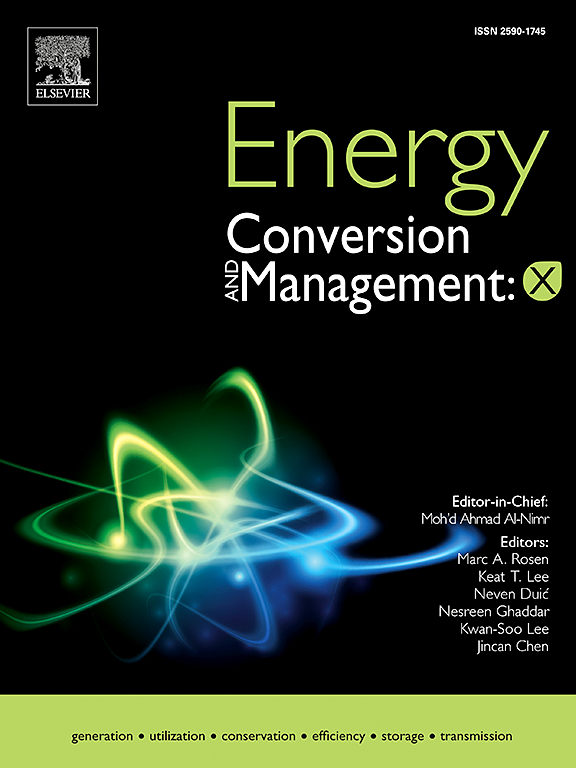Dual-separation enhanced methane reforming system analysis: Understanding carbon-hydrogen synergy for low-carbon hydrogen production
IF 9.9
1区 工程技术
Q1 ENERGY & FUELS
引用次数: 0
Abstract
Hydrogen is recognized as a sustainable energy carrier and is expected to play a crucial role in the future energy structure, which has now become a global consensus. However, current hydrogen production primarily relies on fossil fuels, accompanied by the substantial amounts of CO2 emissions. The conventional sequential approach involves hydrogen production followed by CO2 capture, with these processes occurring independently, suffering from low hydrogen production efficiency and high CO2 capture penalty. To address these issues, we proposed an integrated approach that has achieved high-purity hydrogen production and CO2 capture at mild temperatures ranging from 400 to 500 °C, where the H2 separation is performed by a Pd-Ag membrane and the in-situ CO2 capture is performed by sorbents. To evaluate the potential energy and exergy advantages of this integrated method, a systematic analysis of dual-separation enhanced methane reforming is performed using industrial steam methane reforming (SMR) as a reference system, revealing the irreversible loss distribution and reduction mechanism in the process. The results show that the new system achieves an energy efficiency of 79.12 % and an exergy efficiency of 80.01 %, which are 9.34 and 18.19 percentage points higher than those of the industrial SMR, respectively. The enhanced efficiency and reduced irreversible losses are attributed to factors such as the reduction in the grade difference between the energy-donating and energy-accepting sides, the integration of the “reforming-shift-purify-capture” processes, and the reduced energy penalties for dual separation. The equivalent methane consumption is defined and calculated, and the new system has an energy consumption of 0.455 m3-CH4 m−3-H2, which is 19.9 % lower than that of industrial SMR with CO2 capture (i.e., sequential approach). The system analysis provides a deeper understanding of the advantages of the integrated hydrogen production system and underscores the significance of the ordered conversion and synergy between carbon-based and hydrogen-based components from methane, clarifying the future optimization directions for the hydrogen production system.
求助全文
约1分钟内获得全文
求助全文
来源期刊

Energy Conversion and Management
工程技术-力学
CiteScore
19.00
自引率
11.50%
发文量
1304
审稿时长
17 days
期刊介绍:
The journal Energy Conversion and Management provides a forum for publishing original contributions and comprehensive technical review articles of interdisciplinary and original research on all important energy topics.
The topics considered include energy generation, utilization, conversion, storage, transmission, conservation, management and sustainability. These topics typically involve various types of energy such as mechanical, thermal, nuclear, chemical, electromagnetic, magnetic and electric. These energy types cover all known energy resources, including renewable resources (e.g., solar, bio, hydro, wind, geothermal and ocean energy), fossil fuels and nuclear resources.
 求助内容:
求助内容: 应助结果提醒方式:
应助结果提醒方式:


